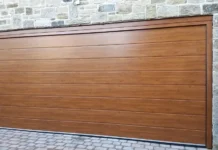Introduction
It’s no secret that the environment is under a lot of stress. The good news is that there are plenty of ways to help. One of the easiest ways is by using sustainable materials in your architectural millwork designs and installations. Not only will you be helping the planet, but you’ll also be making your customers happy and saving money along the way!
Sustainable Materials Have Fewer Impact on the Environment
Sustainable materials are more environmentally friendly than traditional materials. They have a smaller carbon footprint, which means that the impact on the environment is minimized. Using sustainable materials can help with environmental issues such as climate change and pollution.
Sustainable Materials:
- Reduce energy consumption by up to 40% compared with conventional wood products
- Contribute significantly less carbon dioxide emissions into the atmosphere during production and use
- Are often made from recycled material (eg plastics)
Using Sustainable Materials is Better for People and the Planet.
Sustainable materials are better for the environment, people, and the planet.
- Sustainable materials are better for the environment. In addition to being more resource-efficient and less wasteful, sustainable materials can be made from renewable resources that do not require extensive energy consumption or pollution during extraction or processing. For example, bamboo is a grass that grows quickly without pesticides or fertilizers; as such, it requires less water than other wood species such as oak trees (which grow at a much slower rate). Bamboo also absorbs carbon dioxide from its surroundings while growing–thus reducing greenhouse gas emissions in addition to being harvested sustainably by hand rather than machine-harvested like most other woods.*
- Sustainable materials are better for people because they reduce health risks associated with chemical exposure over time (e .g., cancer) while improving comfort through lower heat levels inside buildings where these types of products have been installed.*
Sustainable Materials are More Affordable than You Think.
Sustainable materials are more affordable than you think. Wood is a natural resource, so it’s cheaper than manmade materials. There are many ways to save money on sustainable materials:
- Use reclaimed wood from old buildings or trees that have fallen in storms or other natural disasters. It’s free!
- Buy used lumber and repurpose it into something new and beautiful for someone else’s home (or your own). This way, you’re saving two trees instead of just one–and if they’re the same size and age as each other then technically this counts as three trees saved!
- Look out for sales at hardware stores where they give away free samples of different types of lumber so that people can see how they look before they buy them (this also helps reduce waste). For example: “We’re having a sale on oak today!”
Sustainable Materials are Easier to Maintain.
It’s no surprise that sustainable materials are more durable. They’re made to last longer, which means you won’t have to replace them as often. This saves money and reduces the amount of waste produced by your business.
When it comes to cleaning, sustainable materials are easier than traditional ones because they don’t require harsh chemicals or high temperatures in order to be cleaned properly. This makes them much more resistant against stains and mold growth too!
Using sustainable materials can help the environment, people and your bottom line.
The use of sustainable materials can help the environment, people and your bottom line.
Sustainable materials are better for the environment because they have a lower impact on climate change than non-sustainable materials. For example, if you replace wood with bamboo millwork in your home or office building, you will reduce carbon emissions by 10%.
The use of sustainable products also benefits human health by reducing exposure to toxins like formaldehyde and VOCs (volatile organic compounds) that are often found in conventional building products such as plywood paneling or furniture made from composite wood products like MDF (medium density fiberboard). These chemicals can cause serious respiratory problems including asthma attacks when inhaled over long periods of time; however using sustainable alternatives such as bamboo will eliminate these risks completely!
Finally there are many financial benefits associated with using sustainable architectural millwork such as LEED Certification credits (Leadership in Energy & Environmental Design), which allow builders/developers who choose green options like bamboo instead of plywood panels earn points towards maintaining high ratings on their projects’ energy efficiency ratings system called “LEED”.
Conclusion
Sustainable materials are better for the environment and people, as well as your bottom line. They’re easy to maintain, affordable and have fewer impacts on the environment than traditional materials like wood or plastic. If you’re looking for ways to make your next project more sustainable, look no further than our selection of architectural millwork!












